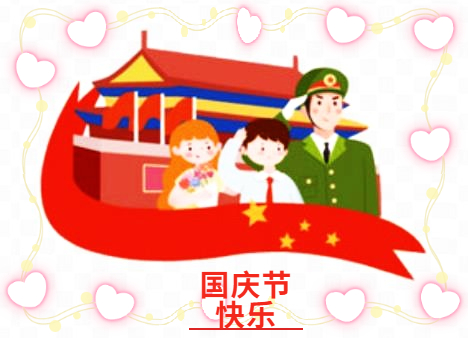哈尔滨是中国纬度较高、气温较低的大城市。四季分明,冬季漫长寒冷,而夏季则显得短暂凉爽。春、秋季气温升降变化快,属于过渡季节,时间较短。接下来是小编为大家整理的关于哈尔滨景点导游词英文介绍,方便大家阅读与鉴赏!
哈尔滨景点导游词英文介绍1
Harbin is a sub-provincial city and the capital of Heilongjiang Province in Northeast China. It lies on the southern bank of the Songhua River. (Harbin is originally a Manchu word meaning 'a place for drying fishing nets.')
Harbin today is still very much influenced by its Russian past.(A city once under Russian rule, it is now a center of trade with that country.) Called the Oriental St. Petersburg, Harbin is one of China's most beautiful cities. The city is well-known for its unique, Russian and European-influenced architecture.
Zhong Yang Street (also known as Kitaiskaia St.), (one of the main business streets in Harbin,) is a perfect remnant of the bustling international business activities at the turn of the 20th century. The 1.4-km long street is a veritable museum of European architectural styles, including Baroque and Byzantine fa?ades, Jewish architectural wonders, little Russian bakeries, French fashion houses, American snack food outlets, and Japanese restaurants. The Russian Orthodox church: St. Sophia Cathedral is also located in this central district of Daoli. (St. Sophia took nine years to build and was completed in 1932.) It has now been made into a museum as a showcase of the multi-cultural architecture of Harbin.
Harbin is also known as 'Ice City' for its long and cold winter.
The annual Harbin International Ice and Snow Sculpture Festival has been held since 1985. It starts from January 5th and lasts one month. (There are ice lantern park touring activities held in many parks in the city. Winter activities in the festival include Yabuli Alpine Skiing, winter-swimming in Songhua River, and the ice-lantern exhibition in Zhaolin Garden. Snow carving and ice and snow recreations are world famous.)
哈尔滨景点导游词英文介绍2
Harbin is the capital of Heilongjiang Province, with a population of 5.3 million and covering an area of 18,000 square kilometers. Located in eastern Songnen plain, it\'s a rolling land with low hills, and shallow valleys and crossed by the Songhua River. It has a semi-humid temperate climate with an annual average temperature of 3.5 degree Celsius, rainfall of 530 millimeters and a frost-free period of 140 days. Its mineral resources are coal, quartzite, marble, copper, lead and zinc etc. Harbin is one of China\'s key industrial bases, with machine building industry as its main stay. Foodstuff, petroleum, chemicals and textiles are its important prop-ups. The output value of its pharmaceutical industry ranks first in China. The main agricultural products are wheat, soybean, beet, flax, tobacco, poultry, etc. It\'s among China\'s major beet growing areas. Harbin is the commercial center of Heilongjiang Province as well as the communication hub in the northern part of North-East China, with a well-developed railway and highway network. It has regular air links with over 30 cities at home and abroad. The Songhua River is an important waterway for shipping.
哈尔滨景点导游词英文介绍3
Harbin is the capital and largest city of Heilongjiang Province in Northeast China, as well as the tenth most populated city in the People's Republic of China. According to the 2010 China census data, the city's urban area has 5,878,939 inhabitants, while the total population of the sub-provincial city is up to 10,635,971. Harbin serves as a key political, economic, scientific, cultural and communications hub in Northeast China.
Harbin, which is originally a Manchu word meaning "a place for drying fishing nets", grew from a small rural settlement on theSonghua River to become one of the largest cities in Northeast China. Founded by Russia in 1898 with the coming of the Trans-Manchurian Railway, today known as the Chinese Eastern Railway, the city first prospered as a region inhabited by an overwhelming majority of the Jewish immigrants. It is known for its bitterly cold winters and is often called the "Ice City." Harbin is notable for its beautiful ice sculptures in winter and its Russian legacy, and it still plays an important part in Sino-Russian trade today. In the 1920s, the city was considered China's fashion capital since new designs from Paris and Moscow reached there first before arriving in Shanghai. In 2010, Harbin was declared a UNESCO "City of Music".
哈尔滨景点导游词英文介绍4
Ice sculptures are a traditional form of art in the northeastern part of China. It is said that a long, long time ago, people went fishing on the Songhua River in winter. They dug a hole in the ice, and put a hook in and they could catch a lot of fish as fish rushed to the hole to get fresh air. Thus fishing continued into the night. For lack of light, fishermen tried to make an ice lamp. They used a pail of water, and let it freeze for a certain time. Then they pulled this block of ice out of the pail. They drilled a hole in the middle, poured out the unfrozen water, and put oil light inside. In this way, an ice lantern was made. Since fish are attracted by light, night fishing is more productive. It is said even in the coldest winter, one could still see ice lanterns dotted along the Songhua River. Nowadays ice lanterns are hardly seen anywhere. Instead people make ice sculptures. Since the water in the Songhua River freezes for over half a meter, people cut blocks of ice from it. Then they use special tools, some hat like carpenters' saws, chisels, planes and, so on, to make blocks of ice into landscapes, buildings, human and animal figurine: In order to get the utmost effects, they also make full use of modem technology, such as light, sound, color and electronic equipment. As you will see, ice sculptures have become a unique art form in Harbin. The Ice Sculpture Show is different every year. Each year it has a special theme. With the improved technology, this show is becoming more and more fascinating. The. Harbin Ice Sculpture Show has become world famous. Every year, an international ice sculpture contest is held in Zhaolin Park. Artists from Japan, Russia, the United States, Canada and many other countries and regions come and demonstrate their works of art. At the same time, a trade fair is also organized to attract more people to Harbin. The Ice Sculpture Show has now become a festival in Harbin. On the fifth of January, the Harbin Ice and Snow Festival is inaugurated by the Mayor of Harbin with state officials and some foreign ambassadors, which attracts thousands of visitors from home and abroad.
哈尔滨景点导游词英文介绍5
(防洪纪念塔的'历史信息)
Here we are at the Flood Control Monument. This monument was built with a European style in conformity with the architecture along the Central Street. It was erected in 1958 in memory of the people of Harbin fighting the flood in 1957. The monument is 22.5 meters in height. Its foundation was made of rock, implying the river dike is as strong as rock. The sculpture in the middle and the top shows that the people of all walks of life building the dyke. At the foot of the monument, there are two fountain ponds. One represents the water level of 119.72 meters in 1932, the other represent the water level of 120.30 meters in 1957. In 1932, when the city was invaded by the Japanese, the authorities did little to build the bank. In contrast, in 1957, Harbin people worked along the bank day and night for over a month to strength the bank. In the end, the flood gave its way and the city was safe and sound. So, the fountains imply that the people of Harbin have tamed the flood to benefit the people. At the back, 20 columns forming a semi-circle embody Harbin people in the 20th century creating miracles.
The Monument Square is also a place for holding political, cultural and sports activities because it is a symbol of Harbin. It manifests that the heroic,
hardworking and intelligent Harbin people will strive forward for a more prosperous future.
The Flood Control Monument is a symbol of Harbin. It manifests that the heroic, hardworking and intelligent Harbin people will strive forward for a more prosperous future.
(介绍斯大林公园)
The river divides the city into the north and the south part and formed two riverside parks on each side. On the south portion of the river, Ninth-station Park, Stalin Park and Daowai Park, all connected to the other, formed the longest park along a river in China. On the north side of the river is the Sun Island. The Flood Control
Monument is just in the middle of the Stalin Park. Stalin Park was originally called the Riverside Park, and was constructed in 1953. It measures 1750 meters from the Songhua Railway Bridge to Jiuzhan Park.
(江畔公园与铁路江上俱乐部)
As we walk along the bank, we can meet some attractive architecture like The Riverside Restaurant followed the classical Russian style with a wooden structure. It has been used as an outdoor scene for many movies. Another beautiful building is the Railway Workers′Club. It was first constructed in 1912 with the name “Yacht Club”. As its main building has the shape of a boat and it is located on the dyke close to the water, it looks like a ship about to set off on its maiden voyage. (江心岛)
Dear friends, you can see a big island with sand beaches in the middle of the river. In summer, people can have picnic there. In winter, there are a lot of sports activities enjoyed by Harbin people such as ice sailing, whipping tops. You can also see the Winter Swimming there!
(结束语)
While taking a river cruise, you will surely be attracted by the beautiful flowers, and swaying willow trees. The banks of Songhua River and the island found in the middle are ideal natural tourist attractions and sun bathing areas. I hope that the Stalin Park will leave you a deep impression and you will all visit it again.
哈尔滨景点导游词英文介绍相关文章:
★ 哈尔滨导游词英文3篇
★ 哈尔滨风景名胜导游词3篇范文
★ 2021哈尔滨导游词
★ 哈尔滨导游词优质范文5篇
★ 介绍哈尔滨的导游词大全合集
★ 哈尔滨建筑艺术导游词介绍3篇
★ 黑龙江哈尔滨太阳岛景区导游词
★ 哈尔滨概况导游词3篇
★ 哈尔滨景点导游词600字
★ 哈尔滨景点导游词作文2021






